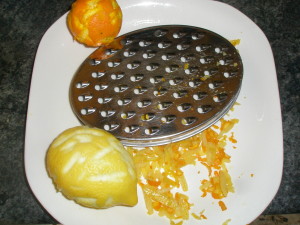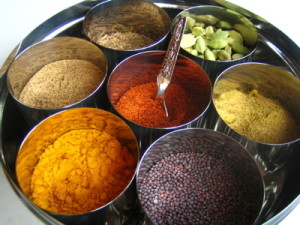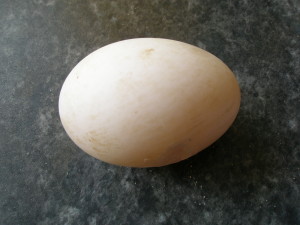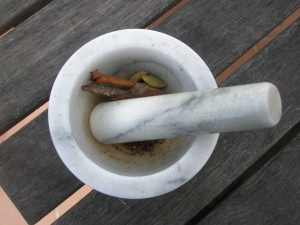Being as organised as we are in our household takes years of practice. We have worked on our ineptitude, honing it, huffing on it and polishing it on our metaphorical sleeves. We have primped and preened it, mixed it with all the very choicest of metaphors, plumbing new heights of inadequacy, until it stands, gleaming and proud, an absolute monument to procrastination and incompetence.
 This morning, having realised that we had left it far too late to buy any hot cross buns, we thought it would be fun to make our own. We always have flour and yeast in the house for bread-making purposes, and various bits of citrus fruit are often waiting to have something done to them. We had some sultanas and some duck eggs kindly given to us by a friend, so we felt confident.
This morning, having realised that we had left it far too late to buy any hot cross buns, we thought it would be fun to make our own. We always have flour and yeast in the house for bread-making purposes, and various bits of citrus fruit are often waiting to have something done to them. We had some sultanas and some duck eggs kindly given to us by a friend, so we felt confident.
A quick browse on the Internet confirmed my suspicion that all that was needed was a bit of tinkering about with a basic bread dough. Delia wanted golden syrup and lemon zest, the BBC wanted mixed peel and no syrup. They were unanimous about egg and mixed spice. We had the former, but not the latter, and no golden syrup.
“How hard can this be?” we asked each other. The bread-maker has a dough proving setting to overcome any problems with ambient temperature, so we concluded we could afford to busk it slightly. It was sure to be a roaring success, and we could invite friends over for delicious buns, straight out of the oven when they were done.
Measuring the flour, yeast, sugar, salt etc. was child’s play for Geoff, who is chief bread making operative in our household. I got to work grating peel off a lemon, an orange and half a grapefruit. We had grapefruit for breakfast, so I had to put the orange inside the empty grapefruit skin to hold its shape for grating purposes, but it all worked beautifully, and soon I had a small mound of mixed peel.
 “But what if the peel’s too hard?” asked Geoff. A good point well made, I thought. Maybe I should not have used the coarsest grater we possess. The peel went into a mug with a couple of spoonfuls of hot water, and we nuked it in the microwave until clouds of fragrant steam came billowing out of its vents. To ensure the pieces were a suitable size we smushed up the citrus-water mix with the hand blender. We had no idea what a suitable size was, so we made it up. Who needs precision when you have enthusiasm and confidence supported by a poor memory of previous disasters? We added the citrus soup to the tepid milk and water, and then whisked the duck egg in the same mug, to save on washing up. So far, it was all going very well, and we were in high spirits.
“But what if the peel’s too hard?” asked Geoff. A good point well made, I thought. Maybe I should not have used the coarsest grater we possess. The peel went into a mug with a couple of spoonfuls of hot water, and we nuked it in the microwave until clouds of fragrant steam came billowing out of its vents. To ensure the pieces were a suitable size we smushed up the citrus-water mix with the hand blender. We had no idea what a suitable size was, so we made it up. Who needs precision when you have enthusiasm and confidence supported by a poor memory of previous disasters? We added the citrus soup to the tepid milk and water, and then whisked the duck egg in the same mug, to save on washing up. So far, it was all going very well, and we were in high spirits.
It was about this point that we realised we had not tackled the thorny issue of mixed spice. A quick rifle through the cupboard turned up pimenton, cayenne peppers, mixed curry spices, some Old Bay Mix (no idea what is in it, but it’s good with fish) oregano, asa foetida and black pepper.
 Desperate times call for desperate measures, so I dived for my lovely masala dabba, which has not been used much, since Geoff discovered a curry recipe using pre-prepared curry powder.
Desperate times call for desperate measures, so I dived for my lovely masala dabba, which has not been used much, since Geoff discovered a curry recipe using pre-prepared curry powder.
Cinnamon sticks, brown and slightly dusty looking, were strewn over the top of the little metal pots inside. I eschewed the yellow mustard seeds and the chilli powder, on the basis that they might not enhance our hot cross bun experience. Star anise looked pretty, but I couldn’t remember an aniseed tinge to shop bought buns, and thought there was probably a very good reason for that.
Cloves and cardamom pods were the only other spices that seemed suitable, so I bunged several of each and a lump of cinnamon in the pestle and mortar in a very unscientific and devil-may-care fashion. Once I had bashed the pods into submission, I stripped the seeds out of them, and discarded the husks.
Some minutes later, we had both had a turn at working our aggression out on the spices, and still had a rather gritty little pile of ground spices, so we sieved it into the milk mixture. The yeast, by now, was frothing furiously, and the milk was cooling, so we decided it was time to throw everything into the bread maker and let it do its stuff.
There was a problem: the butter was rock hard. Nothing the microwave could not fix, so the blob was set to warm a little. We put everything else in the machine and then remembered the butter. There was nothing for it but to pour the liquid butter in with everything else and hope for the best.
Unfortunately, the best seemed to involve the butter forming into a pocket, and doing a stately pas de deux with the rest of the dough mix. After watching for a while, we agreed we had better remove the dough from the machine and give it a stern talking to on a floured worktop. The machine continued to rumble and wobble as I pounded and pummelled and scraped dough off my fingers, reassuring Geoff that it was supposed to look like that at this stage in the game.
The ingredients slowly came together, and the delicious aroma of yeast and spice and citrus promised good things. We decided to add the sultanas, waltz it around the worktop to pick up any stray bits, and bung it back in the machine.
We peered excitedly through the glass window, watching the ball of dough churning about, looking exactly as we thought it should look. We discussed technique for putting the crosses on the buns, turned the oven on, to allow for erratic mountain village power, and made a cup of tea.
Sitting on the roof terrace, watching the play of shadows on the mountains, we congratulated ourselves upon the authentic smell of the spices, our mastery of a new culinary technique, and our marvellous good sense in foregoing the vapid pleasure of bought buns, in order to enjoy the work of our own hands. (We glossed over the role of the bread maker, on the grounds that we needed to prove the dough in suitably warm and consistent conditions.)
The programme was supposed to take an hour and a half, after which we would remove the dough, cut it into twelve portions, roll them into buns, anoint them with flour and water crosses and bake them to golden perfection in the oven.
To our horror, after forty-five minutes, it became apparent that the machine was not working properly. The ball of dough was forming a suspiciously golden crust, and the smell of baking was filling the air.
We leapt into action, whipping the dough out onto the worktop, and chopping it into lumps that were golden and crusty on the outside and raw dough on the inside. We cut off the most thoroughly cooked portions, patted and cajoled the rest of the mess into a variety of weird and wonderful almost bun shapes, arranged them hastily on a couple of trays and thrust them into the oven, which was still only half way to temperature. “Well,” we reasoned, “they can continue to rise until it’s hot enough to cook them.”
Times of crisis call for cups of tea, so we buttered the cooked bits and agreed the flavour was exquisite, as we sipped and chewed and waited.
Twenty minutes later, we had a plate of mis-shapen, burnt on the bottom buns. They had no crosses on them, and we had forgotten to glaze them. We were relieved that our friends had been unable to come and sample the delights of our home cooking.
As I dunked the tops of them in a saucer of hastily lashed together glaze – the brush just wasn’t coping with their craggy surfaces – we discussed trying again.
Tomorrow, we shall be starting the process all over again. This time, we shall have all the ingredients ready before we start, we shall use the finer grater for the fruit peel, the butter will be stood to soften in good time, and the bread making machine will be left on the shelf to ponder its misdeeds and consider how fortunate it is that we did not throw it off the roof.








Looks aren’t everything. I’m sure they still tasted good. xx
They are actually surprisingly OK. Texture is not at all bad, and the flavour is fab
Great stuff – based on your success, maybe I should have a go!
It’s certainly worth a go. If you can do bread, I’m sure you could make hot cross buns. I’m just hoping it will be warm enough tomorrow for the dough to rise properly. Maybe I’ll sling it over the heated towel rail. (In a bowl, of course!)